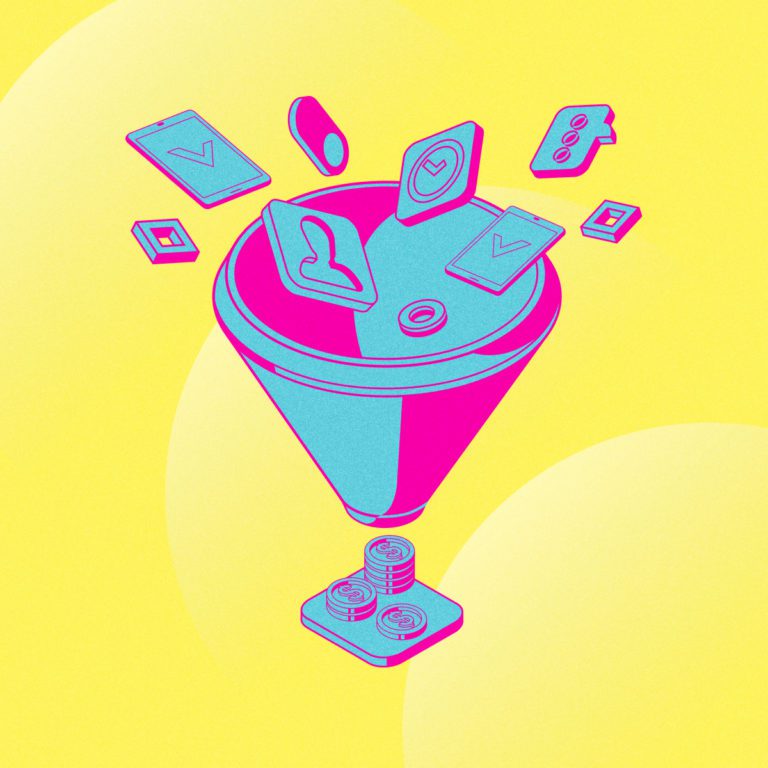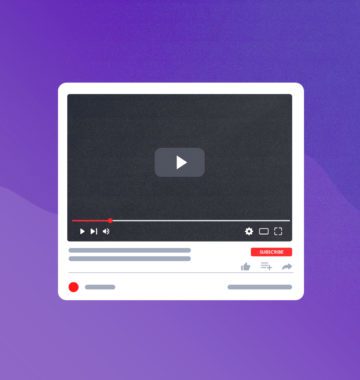Email marketing is one of the oldest and most cost-effective marketing tactics out there. Despite claims about the “death of email marketing” – back when social media became huge – it’s still here, alive, and ever-evolving. And with good reason:
The numbers above don’t lie – email marketing can yield a 4,000% ROI. And it has many other great perks:
- It’s affordable enough for most businesses to use
- It doesn’t depend on an algorithm you have to “trick” into delivering your message at the right time and to the right people
- It can be as personalized as you’d like it to be.
This makes email an integral part of any business’s digital marketing strategy, especially for SMBs.
But how can you use email marketing to promote your website and not just your offers and services?
Post Contents
Benefits of Email Marketing
Email marketing is one of the most popular marketing tools, mainly because it’s personal and personalized, measurable, and actionable. Through email marketing, marketers don’t rely on any third party to obtain data.
Let’s take it from the top.
Email marketing is a one-on-one dialogue with your audience. Its targets and KPIs are measurable, and the results are easy to interpret. Essentially, email marketing is a medium that can promote your brand as a whole instead of a one-time deal and offer.
Many organizations, entrepreneurs, and solopreneurs focus on great design and email copywriting that showcases their brand’s tone, is easy to understand, and is valuable to the recipient. Even more so, they focus on creating personal email sequences, unlike the past days of email blasts and non-customized email templates.
Users who have already agreed to receive your promotional materials will be glad to see an email that looks and feels like a friendly chit-chat. And here’s some data to back it up:
- 84% of B2C customers and 83% of B2B buyers will give their business to a company that treats them like a person, not a number (source)
- 87% of marketers are already using email for content distribution (source)
- 81% of SMBs rely on email as their primary customer acquisition channel, and 80% for retention (source)
- 78% of marketers have seen an increase in email engagement in 2021 (source)
- Marketers who use segmented campaigns note as much as a 760% increase in revenue (source)
Once you get the data you need from initial tests, investing in an email marketing and marketing automation platform and distributing email marketing materials is the most efficient way to promote your product and website.
Email marketing builds personal relationships, and it can nurture customers by leading them gently down the funnel. Eventually, lead nurturing will promote a higher Average Order Value (AOV) and a higher Customer Lifetime Value (CLV).
How to Get Started with Email Marketing
Let’s examine the main ways you can promote your website through your email marketing campaigns.
1. Choose an Email Marketing Software
First of all, you’ll need to pick out an email marketing and marketing automation platform that will work for you and will do your audience justice.
Too often, marketers shy away from email marketing services, as most require HTML knowledge to create a user-friendly and beautiful email marketing campaign.
That isn’t to say that intuitive platforms with easy-to-use email editors and fully customizable templates don’t exist. Or that their cost will break your bank. There are affordable, easy-to-use options out there.
Let’s look at some of the key features your ESP will need to have:
- Segmentation and personalization tools are vital, as customers expect valuable and personalized email content. For example, you can’t send swimsuit offers in December to someone who lives in the northern hemisphere.
- Drag-and-drop design features will help you create emails easily with no knowledge of HTML, and fully customizable email templates will save you a lot of time and effort.
- Automation tools or ready-made automation recipes and triggers can help you reach just the audience you need at the right time. Triggered email campaigns are intuitive and seem like a natural continuation of the user’s action.
- Lead generation tools like landing pages and subscription forms go without saying. You will need to capture leads every step of the way, and you can’t just people them to your regular website pages and expect them to find their way to conversion.
- Pick a platform that implements AI and machine learning. That way, you’ll know when and how to craft content that resonates with your audience.
These are some of the most important functions and features when it comes to creating an email marketing campaign that your audience will love and find relevant, to help you promote your website and reach your business goals.
2. Build Your List
Let me start this section by saying that lead generation is not an optional step. Building and pruning your email list will allow you to create meaningful communication down the line, and drive your website KPIs.
Start by creating a newsletter signup form or a landing page on your website. You can promote email signup pages on your social media profiles, and urge your existing audience to share it with their peers.
This extends your reach, and you’ll attract consumers more likely to be interested in your product or service.
A pop-up newsletter signup can have a higher conversion rate, because the person has already spent at least a few seconds interacting with your content:
That, coupled with the fact that the form offers a clear benefit through a newsletter tip, can significantly boost your signup rates. And, of course, an enticing CTA button is right there where the user can see it.
- Super Pro Tip: Don’t forget to use actionable verbs that lead the user to the desired action, and when possible include UGC in your signup forms and your landing pages. Adding social proof like reviews shows potential leads that your customers love you – which can skyrocket your conversions.
Most email service providers suggest that you use double opt-in signups rather than single opt-in. Through double opt-in, your user will receive an email to their inbox, asking them to verify their email address.
This will help you eliminate the possibility of bots, fake email addresses, and throwaway emails of impulsive prospects who subscribed just to get an incentive or out of momentary curiosity. It’s the best way to ensure that your list contains quality leads that are interested in your email content – and your website.
Another key to building your email list is having consistently branded content on your website, social media, and email campaigns:
Lead generation tools and lead magnets are other big pieces of the email marketing puzzle. Pick a lead generation tool that’s easy to use, and ensure your lead magnet (incentive to provide an email address) is full of actionable verbs and an offer the reader won’t refuse.
Incentives might range from a free ebook or discount code to free shipping, a free subscription, one-on-one time with an expert on your team, or a gift from a local small business.
Keep your landing page forms short, easy to digest, and clear on the offer to solve a real problem the audience has.
Once you have a landing page or signup form, it’s time to test and test again – ideally using multiple versions of your lead-gen page. Use heatmaps to analyze the user experience, and to fix any areas where people get stuck or lose interest.
The data you gather now will be beneficial for future campaigns.
3. Segment and Personalize
Let’s assume you’ve created a list of interested leads that will deliver the best possible results. Now, it’s time to segment and personalize your list, to drive even better results.
Segmentation and personalization are key when it comes to delivering targeted content your audience won’t be able to resist. Take a look at how Buzzfeed does it:
The goal is to create logical audience segments that group together people with similar interests and demographics, and then send them content relevant to their specific needs. You can hone your segments by studying the data collected by your lead generation and email marketing tools.
Personalization is the second step of that process, and it can bring a whole lot of revenue to your business. Invest in an email marketing platform that allows you to use custom fields to maximize your personalization efforts.
Custom fields use dynamic content, one of the newest personalization tools. Dynamic content means that the email sequence’s content changes according to the preferences of the person viewing your email. Essentially, this means that you can personalize according to the stage of the funnel a person is in, or even the page they viewed on your website before signing up.
Your data will help you understand which content should be shown to which user, so that you can avoid showing someone content that’s way too far down the funnel or on a different topic than their main interest. This helps reduce opt-outs and being flagged as spam.
Of course, you should A/B test before sending any campaign to any segment. Data-driven content is much more likely to be spot-on, and earn those conversions.
Email Marketing Tips for Small Business
Now that you’ve built a segmented list and understand personalization, let’s talk about how to write emails that get opened, and the best types of marketing emails to send.
Engaging Email Subject Lines and Content
Your subject lines are all about making a first impression. Make sure to create a subject line that will showcase the user’s benefit, without trying too hard or being too cryptic.
Try these subject line tips:
- Highlight the benefit to the reader
- Make it actionable and valuable
- Let them know exactly what they’ll get by opening the email
- Stay on-brand
- Avoid being cryptic
A great tactic is to create a subject line that will look, feel, and sound like the page or action that triggered the email in the first place. For example, a cart abandonment email could start with “Hey, you forgot something in your cart,” and a welcome email with “We’re so happy to see you!”
- Super Pro Tip: Avoid spam trigger words at all costs! Stay away from phrasing like “Save $$$” or all-capital letters.
As far as your email content is concerned, it should do your subject line justice. Otherwise, you’re facing the risk of being marked as spam or having deliverability issues on the next message.
Create content with verbs that lead the user from point A to point B and, eventually, to your CTA button to boost your website’s content and traffic.
And always be mindful of the types of campaigns you’re crafting. Each campaign should have unique content intended for that audience and ultimate business goal.
Essential Email Campaigns to Promote Your Website
You need to decide on the types of email campaigns that will work best for you and your audience, and then use them correctly.
The goal is of course to promote your website and business, and to avoid annoying your customers with excessive emails, too much sales talk, or irrelevant content. Let’s look at examples of common email campaigns used by SMBs.
The Welcome Email
This should be your first email campaign, which you’ll send to your audience signup and confirmation of joining your list. As you can see, welcome emails are a powerful tool:
Subscribers anticipate welcome emails. They draw your audience back to your website, and familiarize them with your content and your product or service.
It would be wise to include videos or onsite testimonials and tutorials in the welcome email, to show how your product provided a clever solution to another user’s problem.
Use personalization that goes beyond the user’s first name, don’t promote products right out of the gate, and start building a relationship with the reader by addressing their pain points.
The Classic Newsletter
This email keeps your audience’s attention without asking too much.
So long as it’s data-driven, valuable, and relevant to your audience’s needs, newsletter content is bound to engage your audience enough to drive website traffic – and encourage future email opens.
Your newsletter’s aim should be to preserve the great first impression from the welcome email, and build on it.
Make sure that your newsletter content highlights your understanding of your audience, and fits their needs more than it promotes your goals. This is not a pitch email, and you’re not here to sell. An email newsletter campaign’s goal is to entertain, inform, and nurture.
The Re-Engagement Email
It’s inevitable that users will stop interacting with your emails. This doesn’t mean that they’ve all found a better service, or that you can’t win them back. Sometimes there’s just a disconnect, or they’ve forgotten why they found you interesting in the first place.
This is where the re-engagement email campaign can save the day. A “Hey, we miss you!” subject line could do the trick, to stand out among an inbox full of sales subject lines.
This is the time to share something intriguing that will make them remember the value they saw in your business in the first place.
Of course, an incentive can’t hurt at this stage.
The Tutorial Email
If your primary aim is to promote your website’s content, a tutorial email could be your welcome and onboarding message. It also works as a classic newsletter that will teach your users all about your product or service, without trying to make a direct sale.
The big goal with this email is to create content that is valuable, actionable, and based on real-life scenarios. Tutorials are a great way to showcase your expertise and offer insights in a way that’s actually welcome.
Tutorials are especially useful for SaaS marketing, because they offer helpful tips to use what can often be complex new software.
Create a testimonial video or a how-to article that will hook your audience, driving website traffic and moving them down the funnel.
Be Mindful of Your Sending Times
Email marketing can’t effectively promote your website if you send your campaigns out at times when your audience is preoccupied with other things.
Build up data from tests, and use it to send emails at the exact time when your audience is most likely to engage.
Of course, the best time to send an email depends on your industry and your audience demographics. You’ll have to see what works best for you. However, there are some general email statistics:
- Super Pro Tip: If you’re still unsure or don’t have sufficient data, you can always ask your audience on social media. Use a survey maker and create a survey or a poll that will engage your social media audience, get you the answers you need, and could potentially bring in more subscribers at the same time.
The Takeaway
Email marketing is one of the most important tools in any digital marketer’s kit, as it can promote your content and website to audiences that are relevant, interested, and more likely to convert.
Just use some simple steps, invest in a reliable and robust email marketing and marketing automation platform, and see your traffic rise and your website content become more and more popular.






